Beachcomber Pie
August 2025
I challenge myself to take a walk on the beach without picking up stones. Wave-smoothed and sun-speckled, each one is as alluring as a polished gemstone laid down on black velvet cloth. I tell myself to take a walk without pilfering anything. Just one walk. But this is difficult. Every morning offers a new collection, richly hued and freshly bathed in fog-lit brine. Earthbound iridescence.
Just minutes in, I fail the challenge, put a stone in my pocket. Then another and another—this last one a buttercream yellow. With the quantity of plunder I’ve amassed, you might think I will take anything solid. But I do have standards. I don’t grab the drab, gray stones, or those still jagged and shapeless, as if they were recently chipped off a block. No. Only the smoothest will do. I seek out the ovals and egg shapes, and when especially lucky (which has been only once) the heart shaped. Earlier in the week I was fooled into believing I had found a perfect sphere-shaped stone, only to discover it was man-made detritus – the former inner core of an unidentifiable sports ball.
Within the confines of my pockets, my fingers continue smoothing the rocks. For the other 51 weeks of the year, I live bounded by conifer dust, lightly spiked needles, sappy cones, and mushroom spores. My skin isn’t used to this particular ratio of air, water and salt, but the novelty makes it even more appealing to keep rubbing down the stones, which, even after a wash in shallow tide waves, are still coated in a fine sandy grit. I massage them until my fingers are sticky with the remnants of their baptism.
I walk on, over streams of tendrilled seaweed, strewn about like strands of solidified root beer. Low tide releases a new batch of mollusks. Fresh from their ancestral home, they are pearled and pinkish in color. A few are painted in daring purples or mid-heaven blues, their two halves open but still joined together like a set of thirsty lungs. Chitons, limpets, and other sea snails I have yet to learn the names for confetti the wet sand. This buffet lures the chatty gulls, stately Herons, crafty Osprey, and bad ass Bald Eagles. Closer to the bluff are the shells which stormed this beach days ago, now serenely painted in the shade of White Dove.
My pockets are full and The Dog is getting tired. Even though he is slowing down, I have to force him to turn around. He doesn’t want to. He would keep walking forward if I let him. His mind believes he can keep this same trajectory and somehow get back home without ever looking back. I know what this feels like. I know what it means to believe this.
My pockets are full and I worry there will be consequences: a Day of Reckoning. What if, in the afterlife, I am forced to carry the weight of all the stones and shells and driftwood and glass I took from the beach throughout my time on earth? “I only borrowed them,” I’ll say.
This is the last morning, and as The Dog and I make our way back. I continue smoothing the stones with my fingers. Not for their sake, but for mine. For this brief period of time, I imagine the hearth of the earth’s core still inside the stone. I want to be warmed by the force of the inner sphere within our one and only sphere.
I return to the house with my loot, as proud as a sushi chef who just purchased all the best cuts from the fish market. I take this last set of stones, shells, and bark curls to my work in progress. After five days, the baking dish is crammed with intertidal delicacies. There is, in fact, too much. Difficult decisions will need to be made.
This is the burden of abundant flotsam and jetsam. This is a poet’s task in a baking dish: culling, rearranging. Ultimately sacrificing the one stone you thought you would never give up but now must do, because it no longer works with all the other ones. I look at the pie one last time. Photograph it, which will be the only thing about it that lasts. After the pie’s portrait has been captured, I carry it to the shore, dismantle its parts, and give each morsel back to the sea. (Except for a few of the rocks, which I take home after carefully weighing them in my hand. I can carry this much. It’s not too much to carry.)
This year is the best pie I’ve ever made. At least I think so. On some level, I am in no position to judge. This is the poet’s anguish in the form of a beachcomber pie: not knowing if the varied colors and textures work as whole, or if anyone, after one bite, will want a second. Not knowing if this collection of stones, hand-picked and held by me, have any relevance outside of my own pocket. Knowing only that making pies or poems can never unmake sorrow or smooth out injustice; will never disappear cruelty. Knowing a pie cannot solve a single real-world problem. And making it anyway.
Snapshots from the walks where pie ingredients were gathered.
Thank you for reading.
{| AC



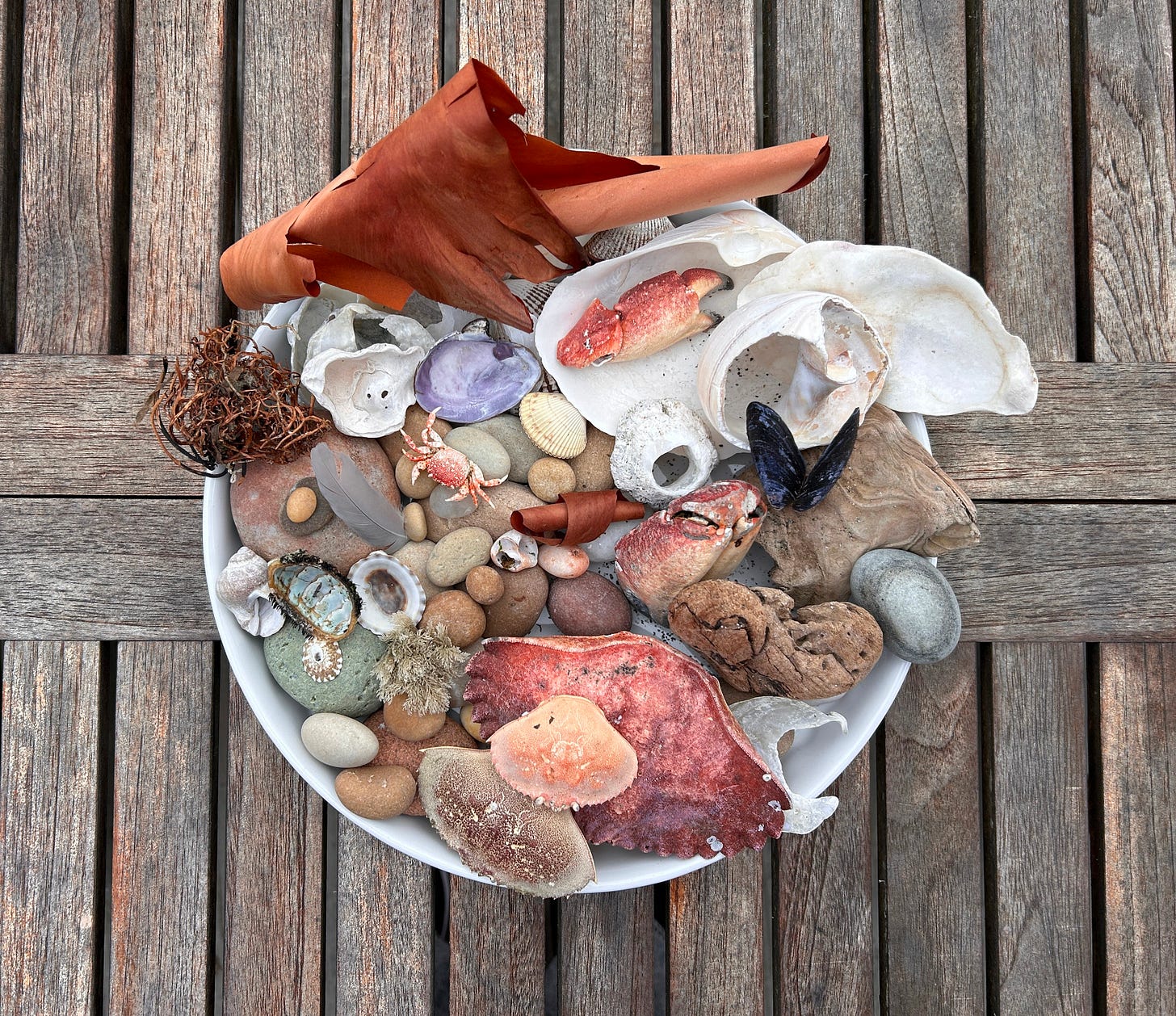
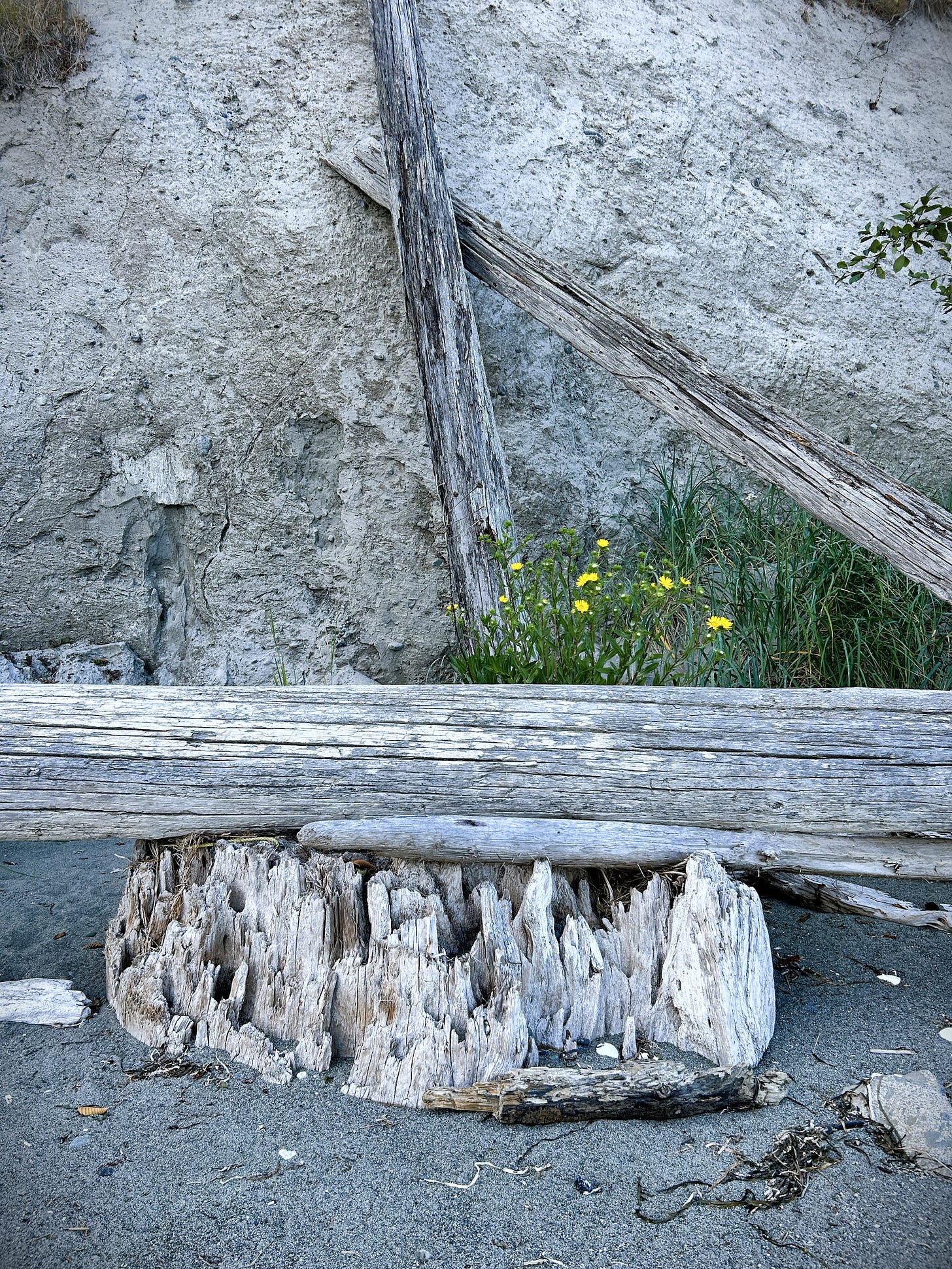
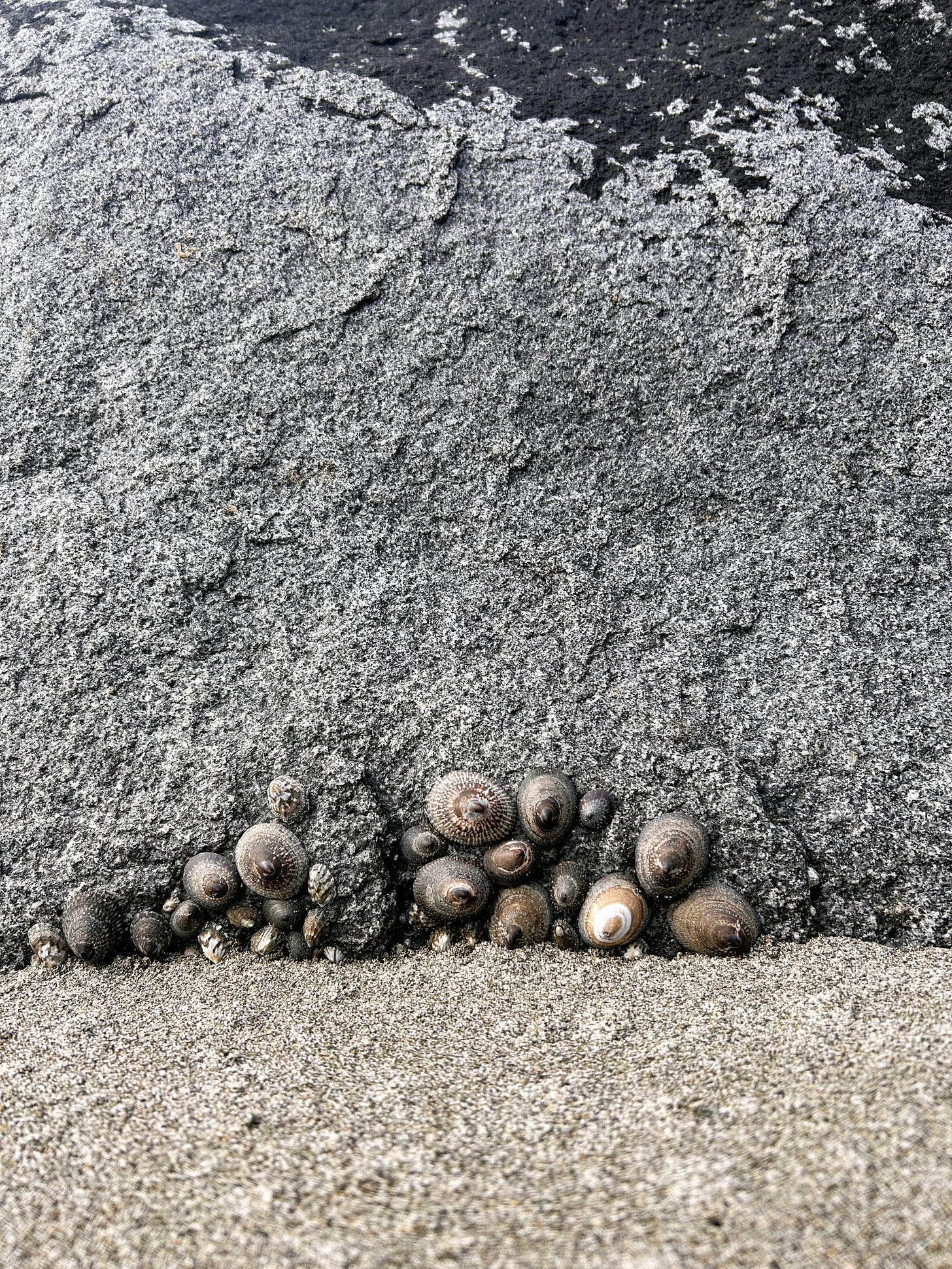
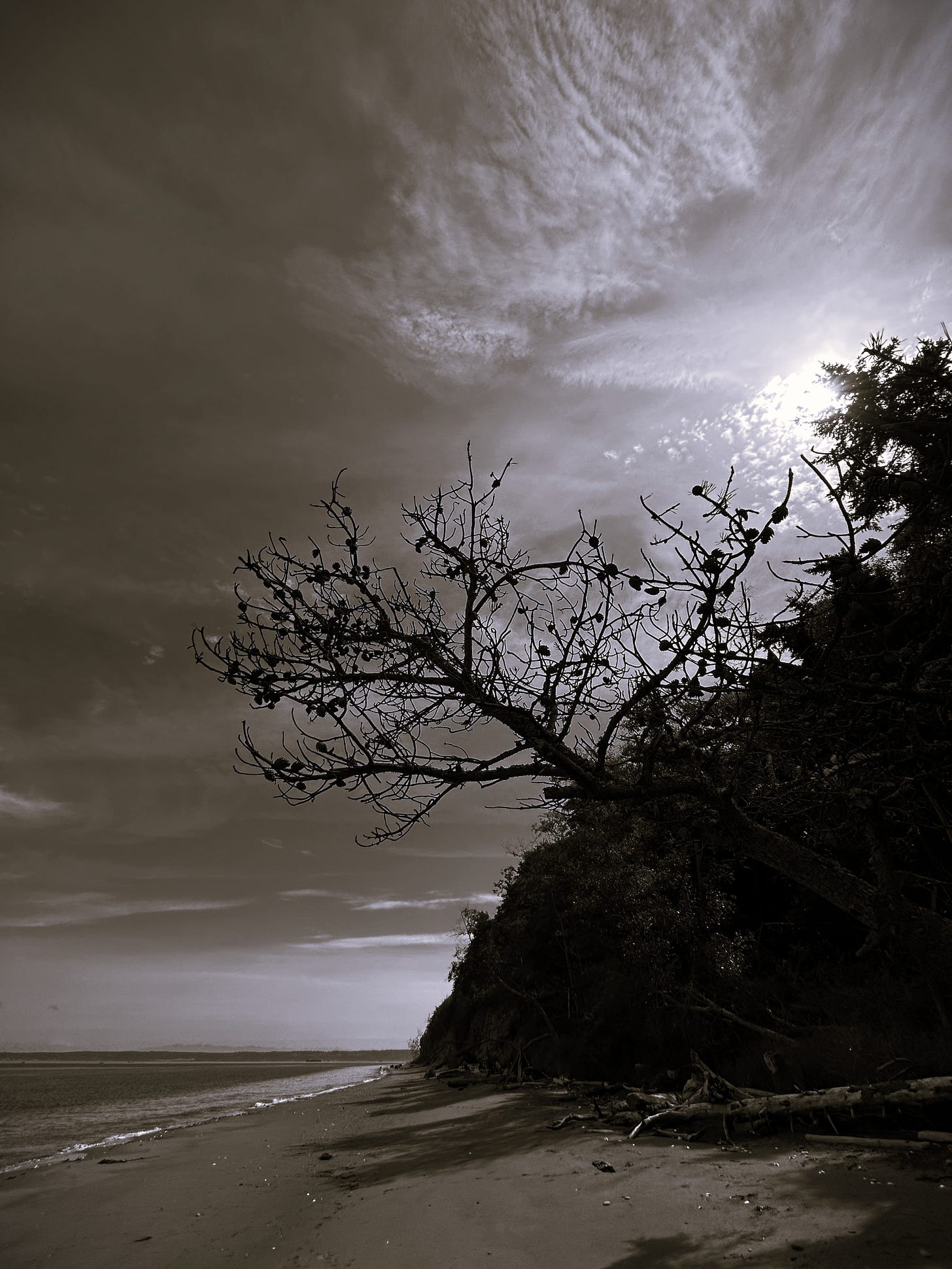
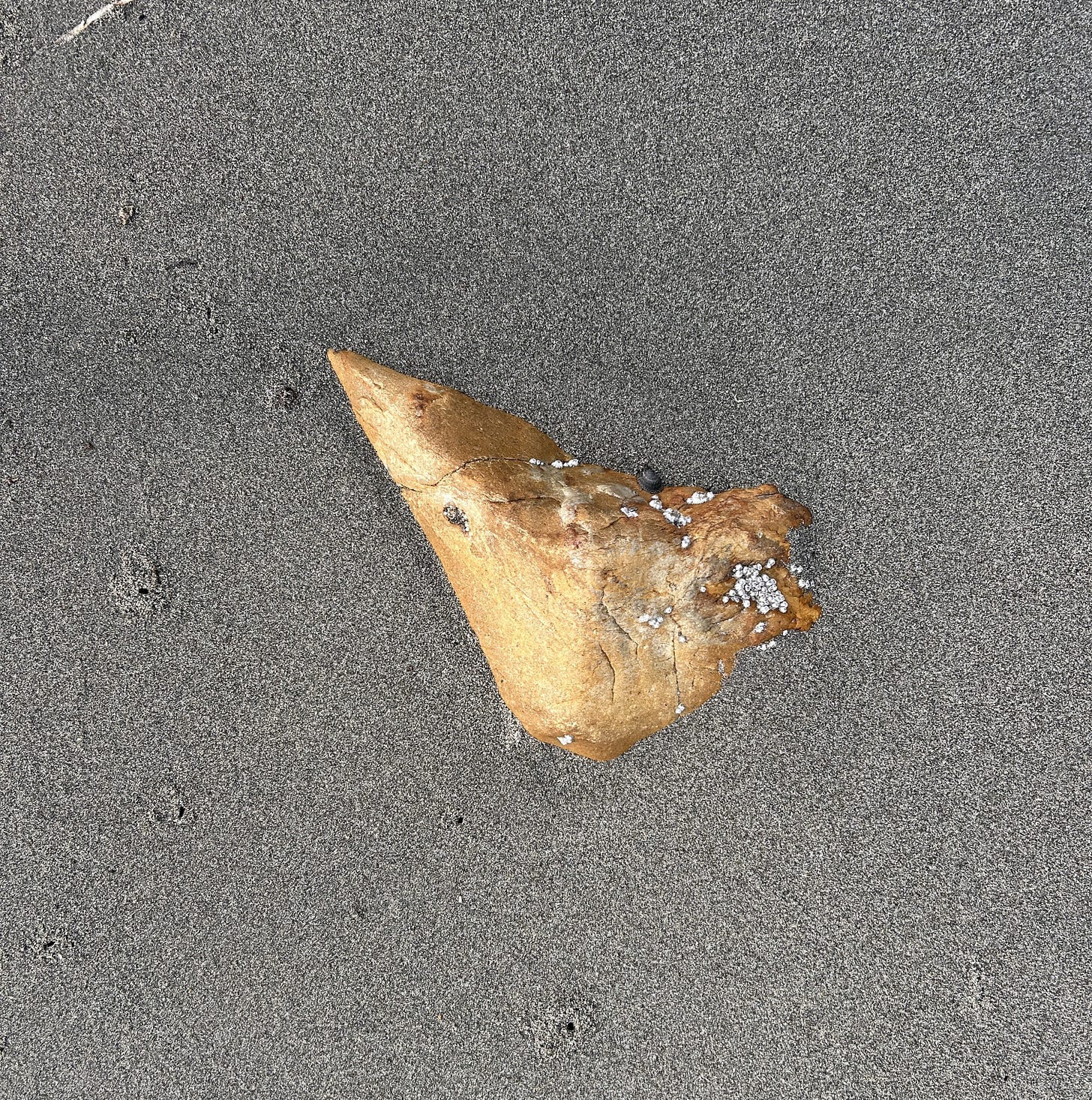
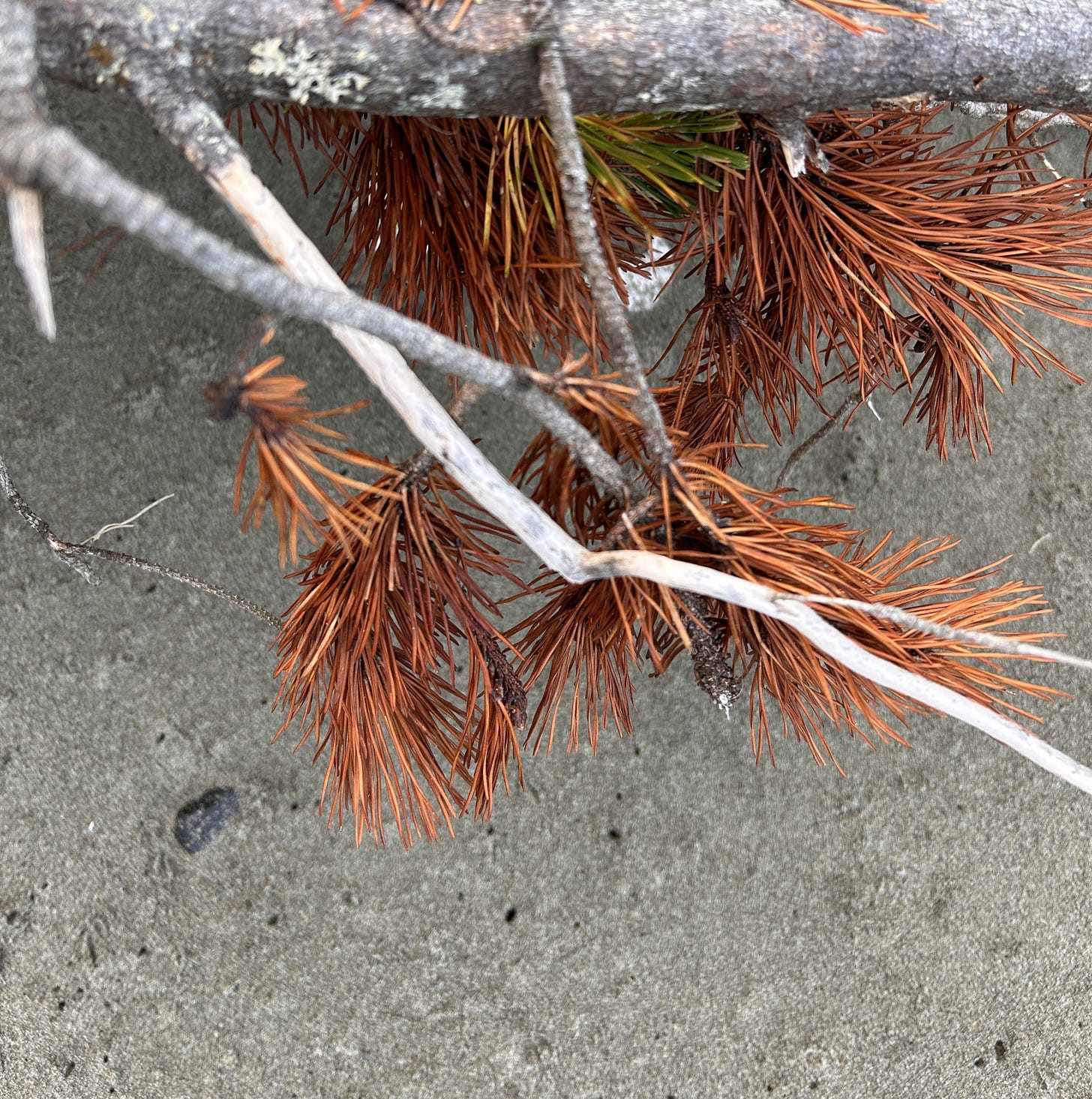
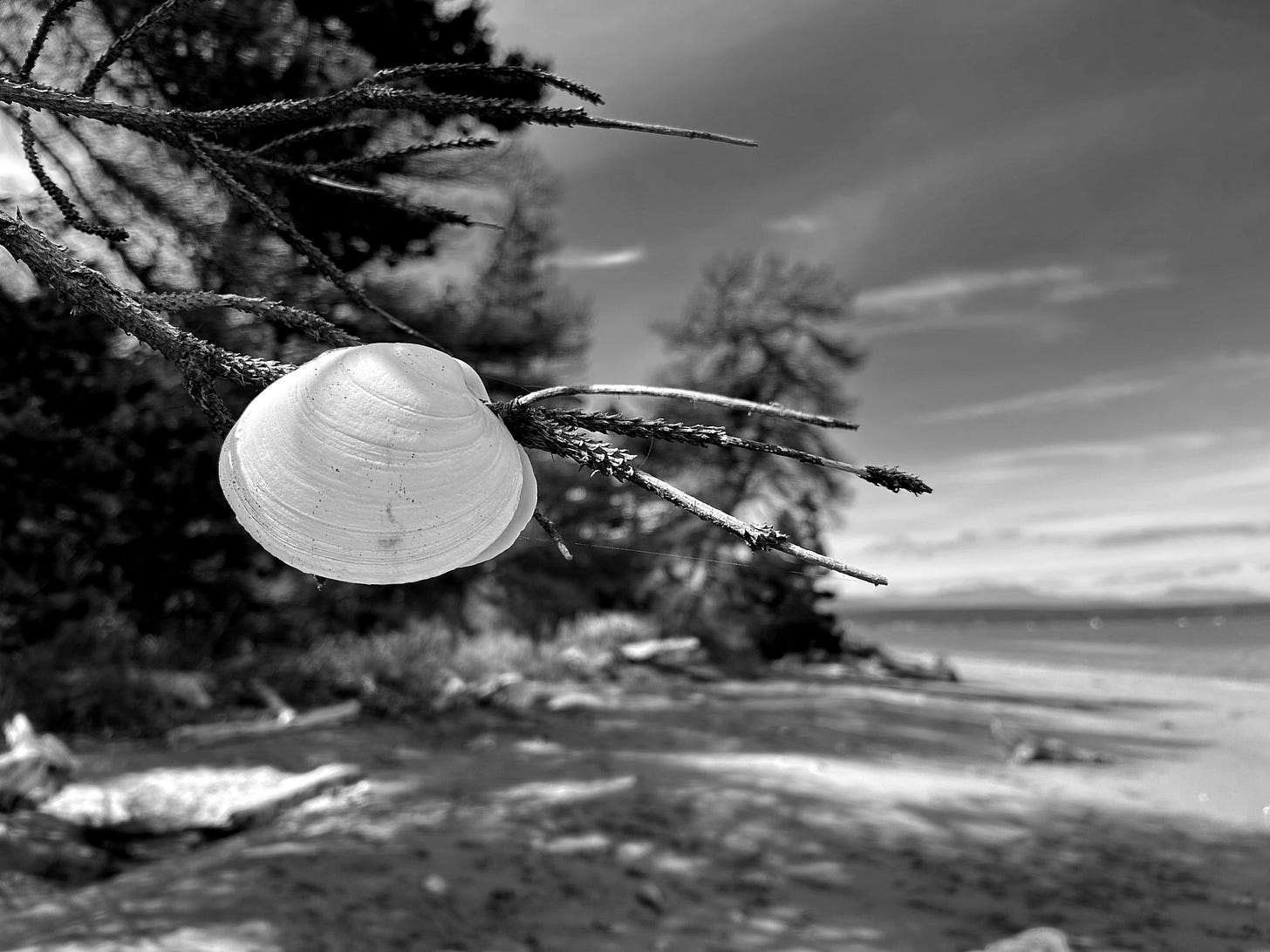
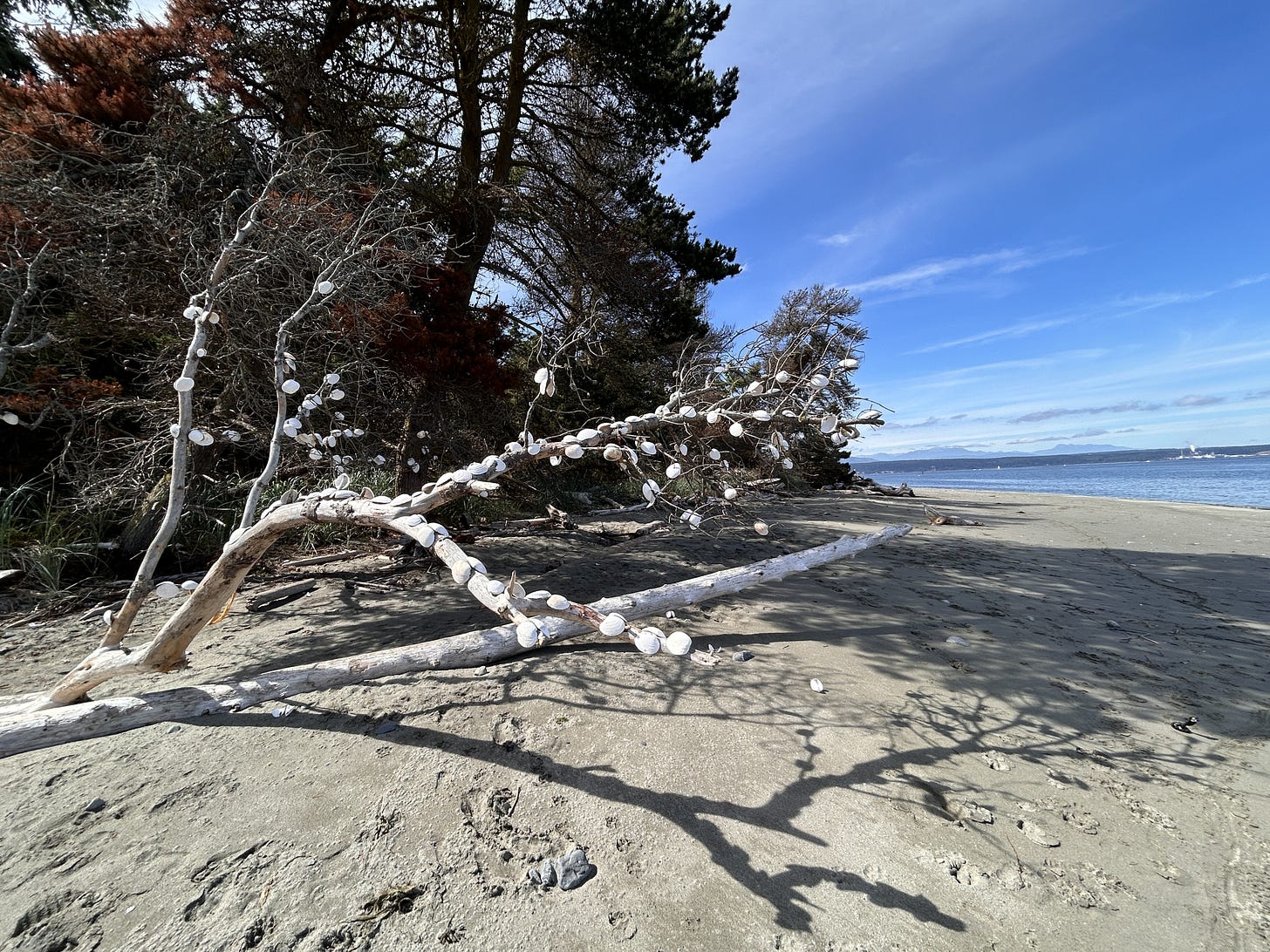
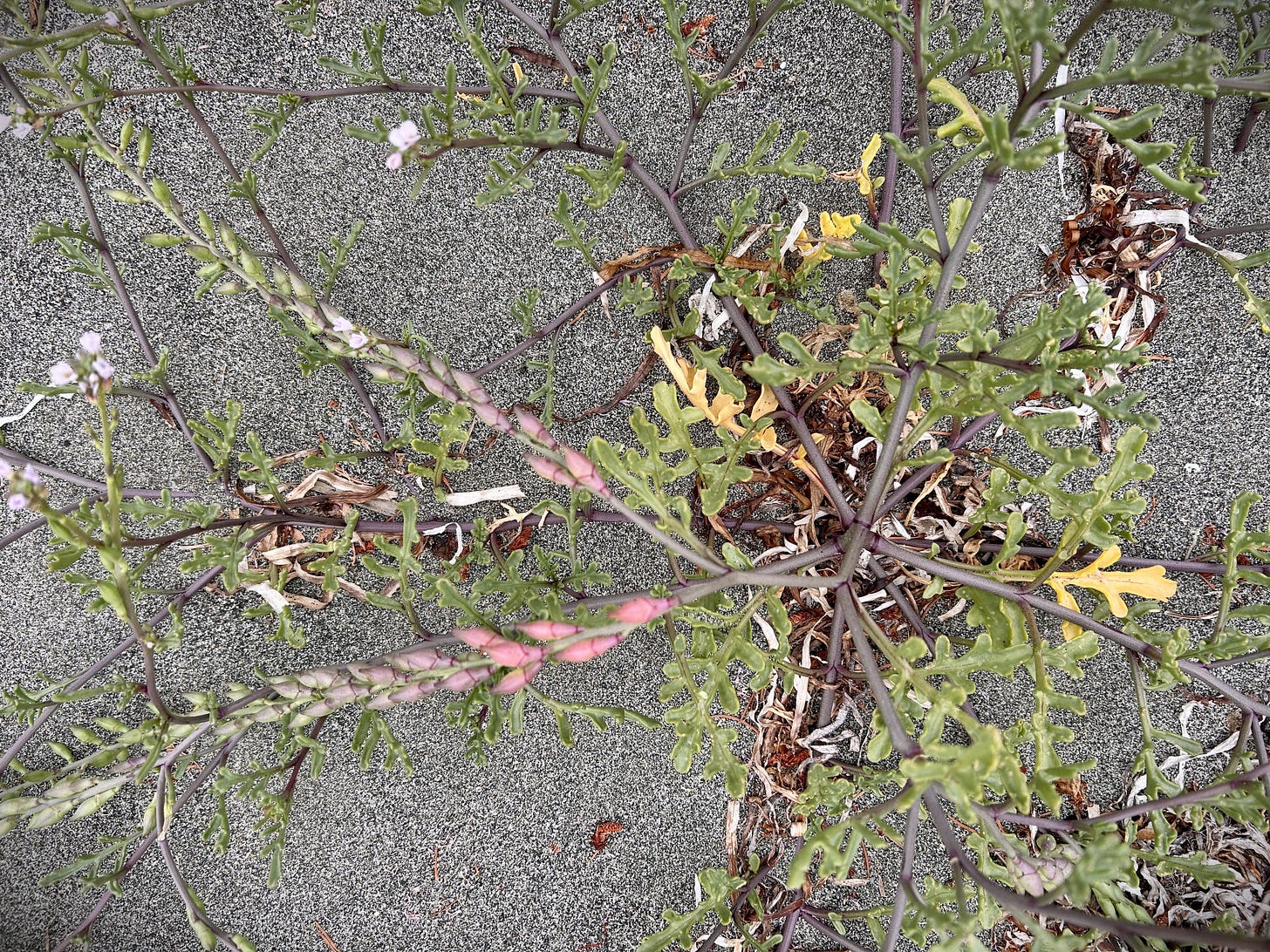
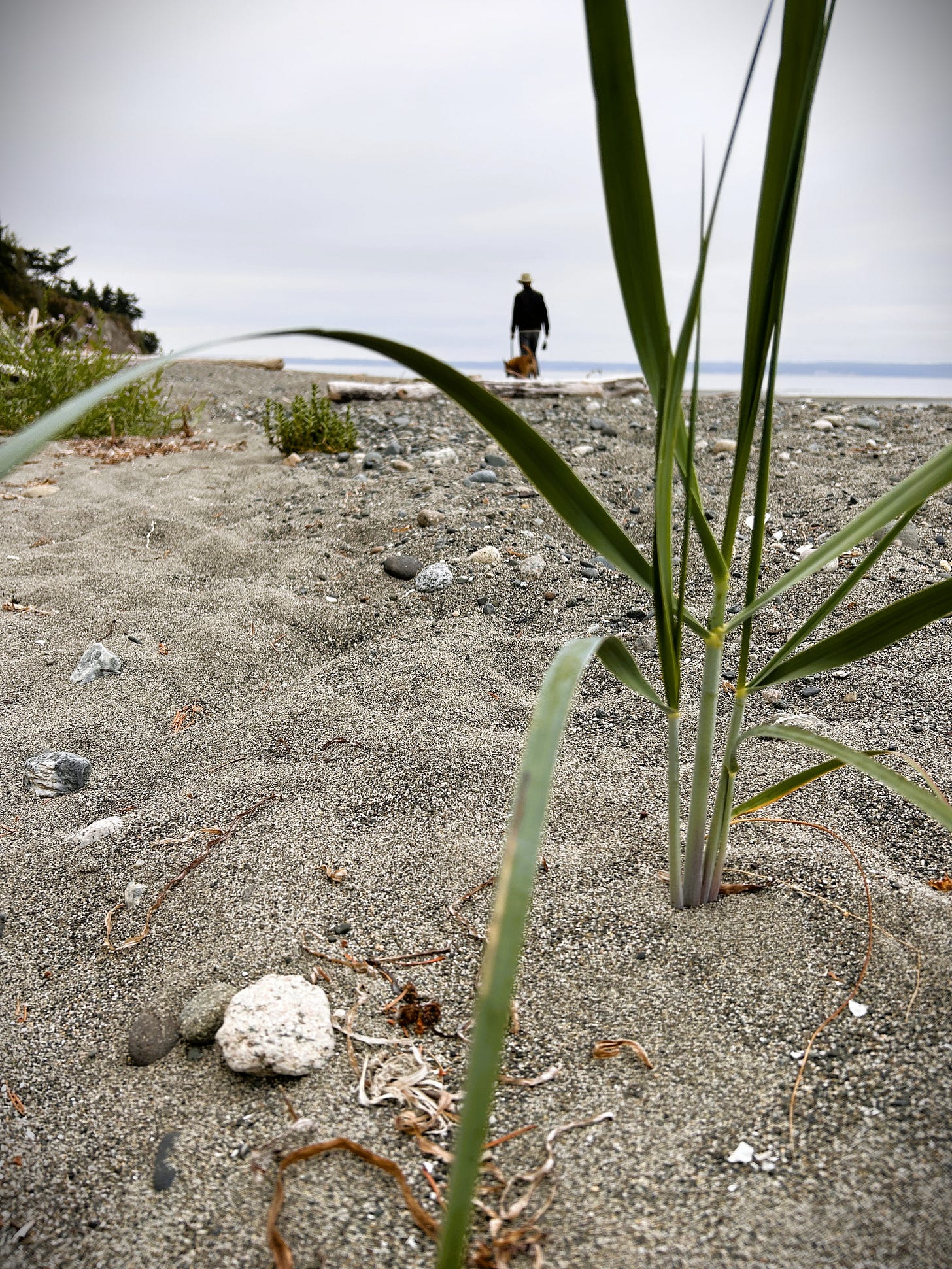
And making it anyway…
.
because you love it, and that is reason enough.
This was such a beautiful read… I didn’t know I needed it. Thank you.